Watercolour Paper
Uncover our range of Watercolour Paper & Pads at Discount Art & Craft Warehouse.
We believe that art should be accessible and available to everyone within every budget. Whether you are a professional or a beginner, we aim to provide you with exactly what you need! We stock a wide range of Watercolour Paper & Pads from the biggest art brands around including Derwent, Reeves, Winsor & Newton, Faber-Castell, Art Spectrum, Copic, Matisse and many more.
Delivery is Australia-wide so you can shop in the comfort of your own home.
Arches Watercolour Blocks
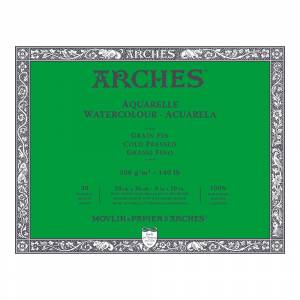
Watercolour Paper & Pads
FROM $66.60
Arches Watercolour Paper
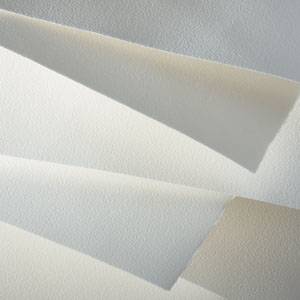
Watercolour Paper & Pads
FROM $10.75
Arches Watercolour Paper Pads

Watercolour Paper & Pads
FROM $30.10
Arches Watercolour Paper Rolls
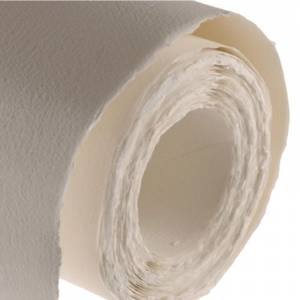
Watercolour Paper & Pads
ONLY $407.15
Arches Watercolour Paper Pad

Watercolour Paper & Pads
FROM $42.00
Canson Aquarelle Watercolour Paper
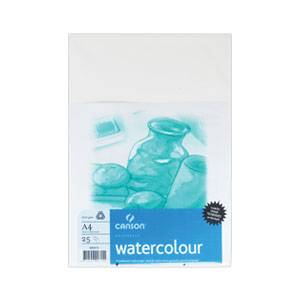
Watercolour Paper & Pads
NOW $32.20
Canson Montval Watercolour Mega Pads
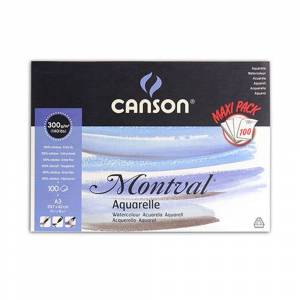
Watercolour Paper & Pads
NOW $104.40
Canson Montval Watercolour Pads
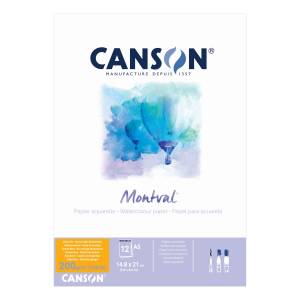
Watercolour Paper & Pads
FROM $8.10
Fabriano 1264 Watercolour Pads
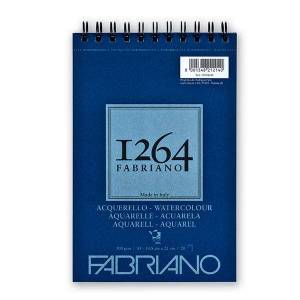
Watercolour Paper & Pads
FROM $22.20
Fabriano Artistico Enhanced Watercolour Blocks (Extra White)
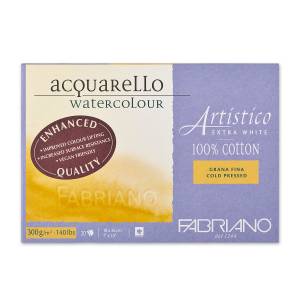
Watercolour Paper & Pads
FROM $79.45
Fabriano Artistico Enhanced Watercolour Blocks (Traditional White)
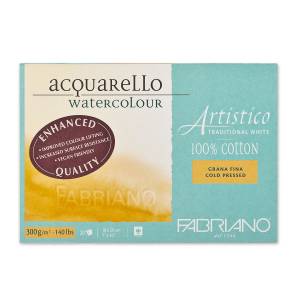
Watercolour Paper & Pads
FROM $79.45
Fabriano Artistico Enhanced Watercolour Pads (Traditional White)
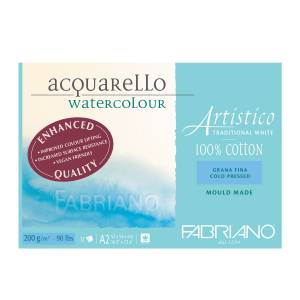
Watercolour Paper & Pads
FROM $24.55
FAQs about Watercolour Paper
How To Flatten Watercolour Paper After Painting?
1. Find a clean and even surface to place your painting face-down.
2. Lightly spray the back with a spray bottle and lay down an object (such as a book or a board) that is flat and heavy. Make sure to choose something larger or the same size as the painting to cover it completely.
3. Leave for 24 hours.
How To Prepare Watercolour Paper?
Before painting, some watercolour painters soak or stretch their paper. To prevent the paper from curling when wet media is applied to the surface, this is typically done on lighter-weight watercolour papers.
Stretching is a simple technique for producing a smooth painting surface for watercolour and gouache that involves soaking the paper, taping it down wet, then shrinking it only until the tape will allow it to move when additional layers of water are applied as it dries.
Introduction to Watercolour Paper
What Makes Watercolour Paper Unique?
Watercolour paper is specifically designed to meet the demands of water-based painting. Unlike regular paper, it has a high absorbency and a texture that allows water and pigment to spread evenly, giving artists control over their techniques. Whether you’re creating delicate washes or bold, vibrant layers, the right watercolour paper supports your creativity and enhances your final artwork. This type of paper is often made from cotton or a blend of cotton and cellulose, which provides the necessary strength and durability to handle multiple layers of water and paint. The unique texture of watercolour paper, known as the "tooth," plays a crucial role in how the paint interacts with the surface. A higher tooth provides more texture, which can add depth and interest to your painting. Watercolour paper is also treated to be acid-free, which ensures that your artwork remains in good condition over time without yellowing or deteriorating.
Different Grades of Watercolour Paper
Watercolour paper comes in different grades, each suited to various skill levels and project requirements:
- Student-Grade: Typically made from a mix of wood pulp and sometimes cotton, student-grade paper is more affordable and ideal for practice or experimentation. While it may lack the durability and refined texture of professional-grade paper, it’s a great option for beginners who are learning the basics of watercolour painting.
- Professional-Grade: Made from 100% cotton, professional-grade watercolour paper offers superior texture, absorbency, and durability. This type of paper is ideal for creating archival-quality works that stand the test of time. It allows for more precise control over water and pigment, making it the preferred choice for experienced artists who require consistency and reliability in their materials.
How Watercolour Paper Affects Your Painting
The quality of watercolour paper directly impacts the final result of your painting. High-quality paper ensures that water is absorbed evenly, preventing unwanted puddling and allowing for smooth, consistent washes. It also holds pigment more effectively, ensuring that colours remain vibrant and true even after drying. On the other hand, lower-quality paper may buckle under heavy washes, causing uneven drying and dull, lifeless colours. Investing in good watercolour paper is essential for achieving professional-looking results and enjoying a more satisfying painting experience.
Types of Watercolour Paper
Cold Press vs. Hot Press
The texture of the watercolour paper is a key factor in its performance, and it’s typically categorised as either cold press or hot press:
- Cold Press: Known for its slightly textured surface, cold press paper is the most popular choice among watercolour artists. The texture allows for a balanced approach, accommodating both fine details and broad washes. This versatility makes it suitable for various techniques, from delicate line work to more expressive, textural effects.
- Hot Press: Hot press paper has a smooth, almost velvety surface that’s perfect for detailed work and techniques requiring sharp edges. Because it’s less absorbent than cold press, colours sit on the surface longer, making blending easier. This type of paper is often preferred by illustrators and artists who work in mixed media, where a smoother surface is advantageous.
Rough Paper
Rough watercolour paper features a highly textured surface, offering a pronounced grain that adds a unique character to paintings. This texture enhances the interaction between the paper and pigment, creating a natural variation that can add depth and dynamism to your work. Rough paper is particularly well-suited for landscapes, seascapes, and abstract art, where the texture can bring out the natural movement and atmosphere of the scene. However, it may be less ideal for highly detailed work, where precision is key.
Paper Weight and Thickness
Watercolour paper is available in various weights, typically measured in grams per square metre (gsm) or pounds (lb). The weight of the paper affects its thickness and how well it can handle water without warping or buckling:
- Lightweight Paper (190 gsm / 90 lb): This paper is suitable for light washes and quick studies but may buckle under heavier water applications. It’s often used for practice, sketchbooks, or projects where the paper’s durability is not a primary concern.
- Medium Weight Paper (300 gsm / 140 lb): The most commonly used weight for watercolour painting, medium-weight paper balances durability and flexibility. It can handle multiple layers of water and pigment without significant warping, making it ideal for most watercolour projects.
- Heavyweight Paper (425-640 gsm / 200-300 lb): This thick, sturdy paper is perfect for heavy washes and extensive layering. It rarely requires stretching and is less likely to warp, making it an excellent choice for professional work where the paper's integrity is crucial.
Choosing the right paper weight depends on your painting style and how much water you typically use. Heavier paper is more forgiving and allows for more experimental techniques, while lighter paper is best reserved for simpler, less water-intensive work.
Tips for Using Watercolour Paper
Stretching Watercolour Paper
Stretching your watercolour paper before painting is useful for preventing buckling during heavy washes. Here’s how to do it:
- Soak the Paper: Submerge the paper in clean water for about five to ten minutes to allow it to absorb moisture evenly.
- Tape the Edges: Place the wet paper on a sturdy board and tape the edges down using gummed tape or a stapler. As the paper dries, it will tighten, creating a flat, stable surface for painting.
- Let It Dry Completely: Allow the paper to dry fully before you start painting. This ensures that the surface remains flat and smooth throughout your work, preventing any disruptions caused by warping.
Stretching is particularly useful for lightweight and medium-weight papers, helping to maintain a smooth, even surface, even when applying large amounts of water.
Preserving and Framing Watercolour Paintings
Once you’ve completed your watercolour painting, preserving it correctly is key to maintaining its vibrancy and longevity:
- Avoid Direct Sunlight: Watercolours are sensitive to light and can fade when exposed to direct sunlight. Always display your paintings in areas that are protected from direct light or use UV-protective glass in frames.
- Use Acid-Free Matting: Choose acid-free mats and backing to prevent yellowing and deterioration over time when framing your painting.
- Consider Varnishing: While not always necessary, some artists choose to varnish their watercolour paintings to protect the surface from dust and moisture. If you decide to varnish, be sure to use a product specifically designed for watercolours to avoid altering the appearance of your work.
Best Practices for Paper Storage
Proper storage of your watercolour paper is essential to keep it in optimal condition:
- Store Flat: Keep your paper flat to prevent warping or creasing. If you need to roll it for storage, do so loosely and avoid tight rolls that can create permanent creases.
- Maintain a Dry, Cool Environment: Store your paper in a cool, dry place to protect it from moisture and humidity, which can cause the paper to warp or deteriorate over time.
- Use Protective Covers: Protect your paper from dust and dirt by storing it in a portfolio or wrapping it in acid-free tissue paper. This will also help preserve the surface texture and prevent any damage before you’re ready to use it.
Choosing the right watercolour paper is a crucial step in ensuring the success of your artwork. Whether you’re a beginner or a professional, the quality and type of paper you use can significantly affect the final outcome. At Discount Art N Craft Warehouse, we offer a wide range of watercolour papers to suit every artist's needs, all at prices that won’t break the bank. Explore our selection today to find the perfect paper for your next creative project.
